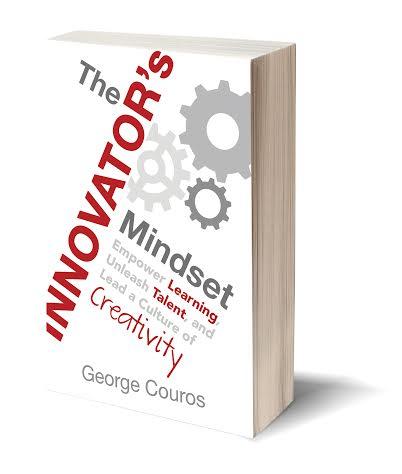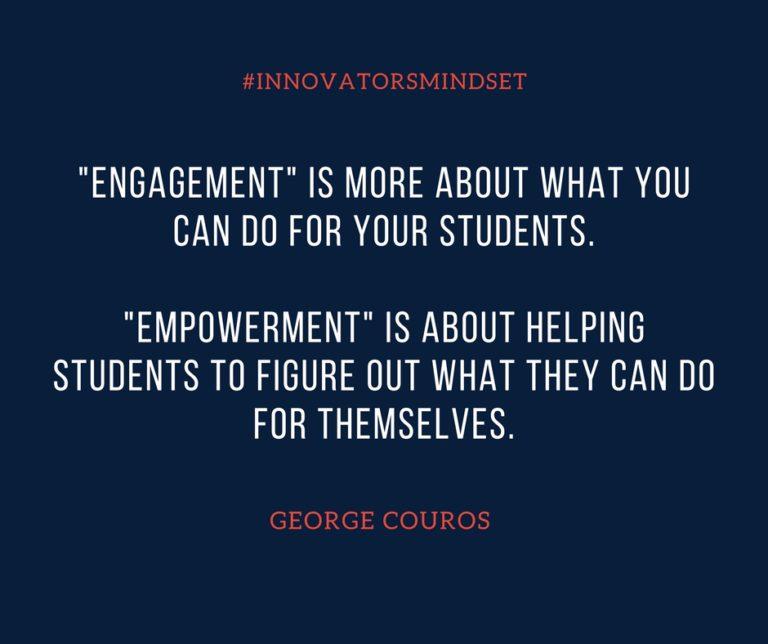Passive Learner to Active Creator. A Move from engagement to empowerment
By George Couros
This is important to state…engagement and empowerment are not mutually exclusive from one another, but you can be engaged without being empowered, but if you are empowered, you are definitely engaged.
It is also important to understand that “lecture” is not a bad thing. I think that being a great storyteller and making content interesting is an essential trait of a modern day educator.
My point is that if the learning in the classroom is all about what the teacher does, and less about what the students create, then what is the long-term impact that this will have on our students? Do our kids learn that someone else will make it happen for them, or that they can make it happen for themselves? Yes, we need others on that journey to support us, but what is our contribution to solutions moving forward for ourselves and others?

If you want to see the effectiveness of a teacher, don’t look at what they do, but what their students do because of them.
Image by Alec Couros
Here is what we need to understand about the above picture; the technologies will change but the arrows won’t. We will never live in a time again where people won’t be able to create and share content with relative ease to the entire world. That picture would not have been created when I went to school, but it exists now. What does that reality change for our schools?
Shauna Cornwell recently wrote the post, “The Art of Science and Innovation,” where she gives distinct examples of students moving from “passive learner” to “active learner” or “creator.” Some of her ideas are listed below:

She sums up these ideas beautifully at the end of her post:
“There will always be a time and place for teachers to use a more lecture-style format, offer mini-lessons, and use direct teaching, but in today’s changing world we know that our students also need more than that. Innovative teaching and learning is about finding a balance that offers our students more regular opportunity to play an active role in their own learning.”
As you read any new book or attend a new workshop, continuously ask the question, “Is this more about what the teacher can do for the student, or about empowering and finding ways so that the student can eventually do things for themselves?” This subtle shift will be needed for our students to create their futures, instead of hoping someone else will do it for them.
Learning in the classroom is NOT about what the teacher does, it is about what the students create.
George Couros
Author of “The Innovator’s Mindset”.

